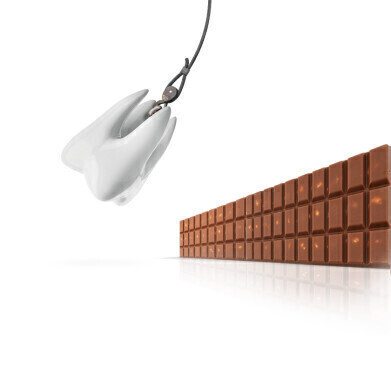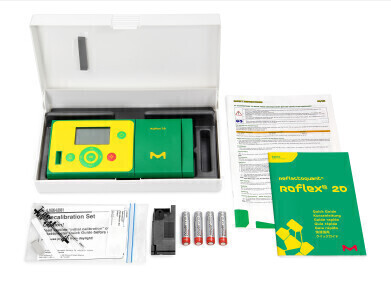Laboratory Products
Get Tasty Halloween Treats!
Oct 02 2023
Determine the sucrose in chocolate and malic acid levels in sweets, with the easy-to-use Reflectoquant® system
Malic acid and sucrose are two key ingredients used in sweet production. Whether you are testing sucrose content in chocolate or malic acid levels in sweets, the Reflectoquant® system can provide an inexpensive, in process monitoring laboratory to perform critical analyses, obtaining quantitative results on-site. The full range consists of test strips, reflectometer, and accessories, combining ease-of-use with consistent, reliable results including batch-specific calibration. Stay compliant with regulations, get your quality control in action: strip, dip, read, record!
Malic acid is often used in sour candies to impart sour taste. When used in sugar confection, the low melting point of malic acid gives greater clarity to the finished product. Nonetheless, it’s critical to ensure that food products comply with food safety regulations set by the European Union, FDA and the Codex Alimentarius Commission. The maximum limit for malic acid content is set at 6.9% in the US for hard candies. Malic acid is permitted without limit in the EU. However, an acceptable daily intake (ADI) level of 330 mg/kg body weight per day is established in the European Union. In agreement with EU regulations, all the safety guidelines that must be observed while using malic acid need to be included in the relevant material safety data sheet.
Monitoring malic acid content in candies helps ensure compliance with these regulations and ensures the safety of the product for consumers.
Sucrose is a common ingredient in chocolate and responsible for its sweet taste. Regular monitoring of sucrose levels in chocolate is important to ensure compliance with relevant food safety regulations and labeling requirements. There are maximum allowable limits on the amount of sugar content in chocolate products set in different parts of the world depending on the region’s regulatory policies. For example, the Cocoa and Chocolate Products Regulation sets the maximum limits on the amount of sugars that can be added to chocolate products in the European Union. Accurate labeling of total sugar content, including sucrose, is also required, and manufacturers must comply with guidelines for daily sugar intake.
Checking sucrose levels in chocolate ensures that this iconic treat meets the guidelines and is safe for consumption.
The importance of testing ingredients in food products cannot be overstated, especially when we consider potential health implications related to excessive sugar consumption. Regulations and guidelines may vary across regions and change over time. For this reason, it’s always advisable to check with the relevant regulatory bodies to get the most current and accurate information regarding regulations and guidelines applicable to ingredients in food products in your area.
Overall, testing malic acid and sucrose in food products to ensure compliance with food safety regulations and guidelines is vital to ensure consumer safety and regulatory compliance by food product manufacturers.
Digital Edition
ILM 49.5 July
July 2024
Chromatography Articles - Understanding PFAS: Analysis and Implications Mass Spectrometry & Spectroscopy Articles - MS detection of Alzheimer’s blood-based biomarkers LIMS - Essent...
View all digital editions
Events
Jul 28 2024 San Diego, CA USA
Jul 30 2024 Jakarta, Indonesia
Jul 31 2024 Chengdu, China
ACS National Meeting - Fall 2024
Aug 18 2024 Denver, CO, USA
Aug 25 2024 Copenhagen, Denmark



-(1)-(1).jpg)


24_06.jpg)













